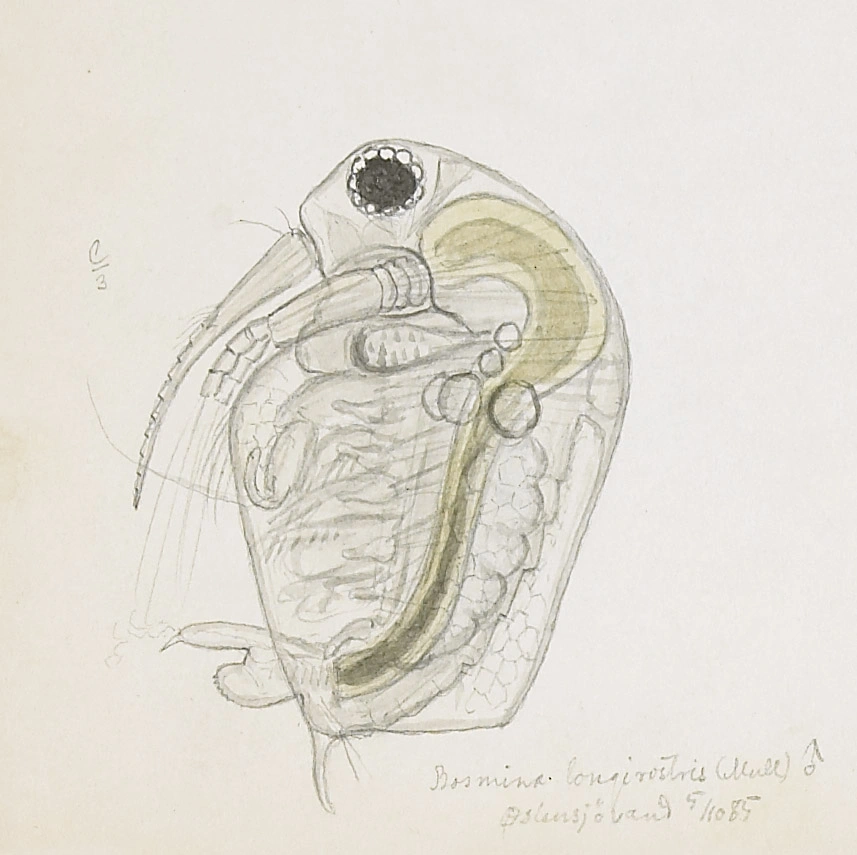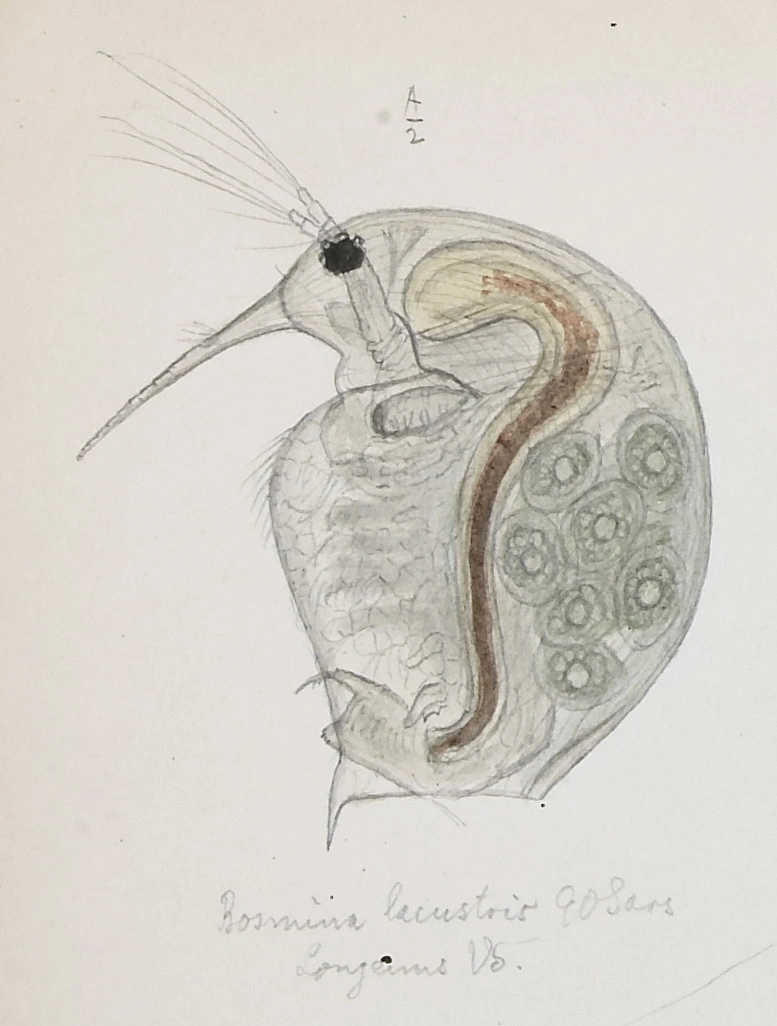Bosmina longirostris
Bosmina longirostris is often associated with nutrient rich lowland lakes with high densities of fish. The head is evenly rounded anteriorly, ventrally it protrudes into a fairly long ventrally directed rostrum, looking like it is a part of the body.
Key characteristics
Bosmina longirostris (female)
Bosmina longirostris (male)
Bosmina longirostris is very similar to B. longispina. Seen from the side it has an almost circular shape. The head is evenly rounded anteriorly, ventrally it protrudes into a fairly long ventrally directed rostrum, looking like it is a part of the body. As in B. longispina the dorsal edge of the carapace is strongly arched, while the ventral edge posteriorly ends in a pointed process. Instead of teeth the abdominal claw has a bunch of hairy bristles decreasing in size towards the base. The species is transparent with opaque areas slightly tinted yellow.
Female: Length 0.2–0.7 mm
Male: Length 0.4–0.5 mm
Ecology and distribution
B. longirostris is a plankton/littoral species found in less than 10 % of the water bodies, and is not as common as its relative B. longispina. These two species may have been mixed up. B. longirostris is widely distributed in Norway including Svalbard, but the majority of records are from the south east. The species is often associated with nutrient rich lowland lakes with high densities of fish. Except for two records, all are from water bodies situated below 500 m a.s.l. It occurs in localities of all sizes, but not in acid (pH<5.0) water. It is also rare in electrolyte poor water.
| Vitenskapelig navn | < 4,5 | 4,5 - 4,9 | 5,0 - 5,4 | 5,5 - 5,9 | 6,0 - 6,4 | 6,5 - 7,0 | 7,0 - 7,4 | > 7,5 |
|---|---|---|---|---|---|---|---|---|
| 0 | 0,5 | 2,7 | 7,2 | 13,8 | 12,4 | 12,6 | 32,6 |
| Vitenskapelig navn | < 1,0 | 1,0 - 1,4 | 1,5 - 1,9 | 2,0 - 2,9 | 3,0 - 3,9 | 4,0 - 4,9 | 5,0 - 6,9 | 7,0 - 9,9 | > 10,0 |
|---|---|---|---|---|---|---|---|---|---|
| 0,8 | 0,8 | 3,8 | 4,6 | 8,9 | 12,7 | 17,5 | 19 | 21,2 |
| Vitenskapelig navn | < 0,01 | 0,01 - 0,09 | 0,1 - 0,9 | 1,0 - 9,9 | 10,0 - 99 | 100 - 999 | > 1000 |
|---|---|---|---|---|---|---|---|
| 0 | 3,1 | 6 | 9,4 | 10,3 | 13,5 | 15,5 |
| Vitenskapelig navn | < 100 | 100-299 | 300-499 | 500-699 | 700-999 | >1000 |
|---|---|---|---|---|---|---|
| 14,3 | 21,1 | 6 | 3 | 1,2 | 0 |
Look-alikes
Bosmina longispina


